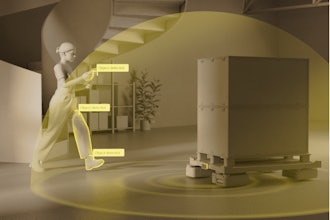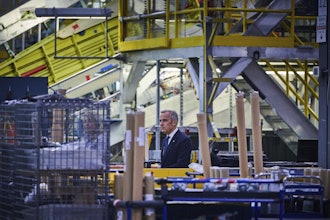
Editor's note: This is sponsored content.
If you run a wholesale business, you know it requires some wizardry. Or, at the very least, you need a delicate and precise balance of cash flow, inventory, and demand.
Wholesale businesses rely heavily on their inventory to meet customer demand. After all, supplying resellers with products is the entire point of a wholesale business.
For this equation to work, you need enough inventory to meet your customers' demand. If you don't have enough inventory, you'll need to take steps to build it up.
However, there are some creative solutions to the inventory problem that wholesalers can take. Here are just a few of the best options to build your inventory quickly, efficiently, and cost-effectively.
1. Use inventory management software
At first glance, you might not think that investing in inventory management software will help you build your inventory. After all, it's called "inventory management" software and not "inventory building" software.
However, data is powerful in any industry, and the real benefit of inventory management software is the ability to analyze operations, track trends, and see into the future. Let us explain.
If you can tell which items are selling the fastest, you can make strategic purchasing decisions to prioritize those products when returning to your production cycle. You can also more easily tell which items are moving slower, so you don't end up with overstock.
2. Negotiate better payment terms
Sometimes, the best way to mitigate low inventory is to call your suppliers. If purchasing power is an issue, this is an especially effective tool for being able to build your inventory without breaking the bank.
For example, many suppliers offer various payment terms, including options allowing you to delay payment for a specific time. This can help you generate some profit before the invoice is actually due, creating a bit of cash flow buffer for your business.
Additionally, many suppliers offered reduced pricing on bulk orders. If your company can float it, consider purchasing components or products in larger quantities less often so you can build your inventory to a comfortable degree.
3. Obtain specialized wholesale financing.
Sometimes, it all comes down to being able to source funding to purchase more inventory. If you're in need of a quick and creative solution to empty shelves, then an online wholesale financing company can help you build up your stock.
Generally, companies like ForaFinancial.com offer flexible loans with clear and upfront payments and terms. Compared to other funding sources, these options let you get a cash influx much more quickly — sometimes even within a couple of days of approval.
With this type of financing source, you can shore up your short-term inventory needs without any major disruptions to your daily operations. In the long run, this will lead to happier customers and more sales.
4. Diversify your supply chain
There are times when low inventory is caused by outside circumstances, such as supplier disruptions or other volatility in your supply chain. Because of that, it's best to diversify your suppliers as much as possible.
Having a diverse mix of different partners in your supply chain will give you backup options if one of those suppliers experiences an issue. With a bit of planning, you can even strategically ensure that each supplier lead time complements each other.
As a bit of a side note, it's also a good idea to look into locally based-companies. Generally, these companies will offer better lead times and prices than international or non-regional firms.
5. Look into the consignment model
Another option is to consider a consignment model with one or more of your suppliers. We wouldn't recommend this option for all your suppliers over the long term, but it can work in a pinch.
Essentially, consignment works by providing you with inventory that the supplier technically "owns" until it is sold. At that point, you and the supplier will split payment based on predetermined terms.
This, obviously, allows you to meet customer demand without major upfront costs. And, based on the cut of profit you've negotiated, it can also help you build your own inventory in the medium term.
Navigating low inventory is difficult but doable
Navigating low inventory in your wholesale business can be tricky, but with the right creative solutions, it's certainly doable.
Whether you opt for a consignment model or online wholesale financing, you can build your inventory and customer base and help set up your business for long-term success.






















